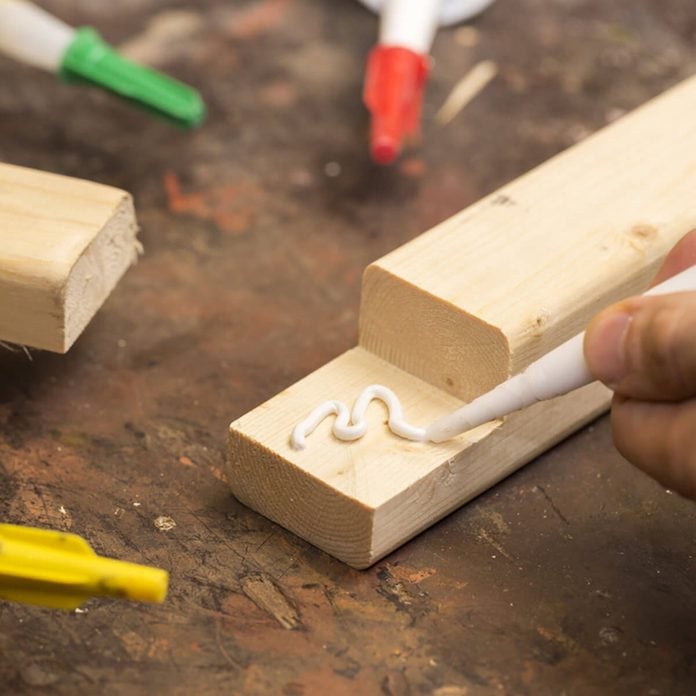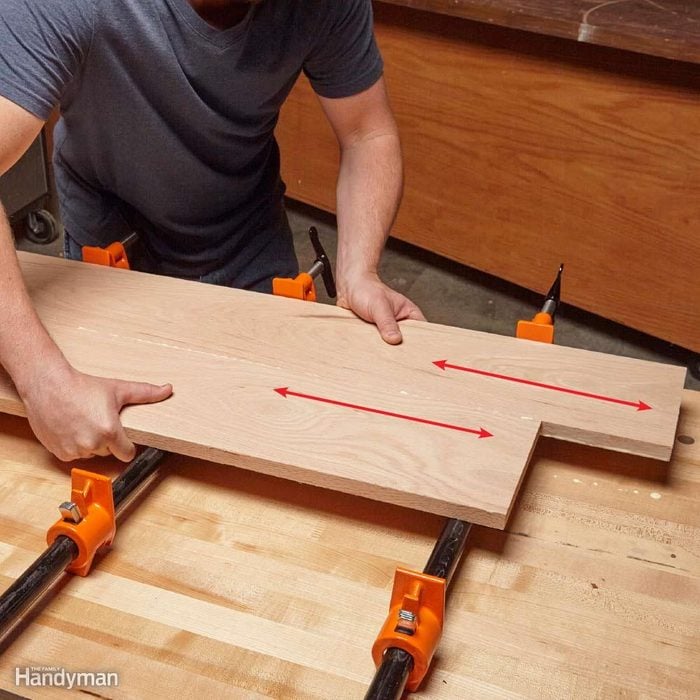
What is the Best Wood Glue?
Yellow exterior glue (sometimes gray)
Yellow exterior glue is used for outdoor projects but not continuous submersion. It will be labeled water resistant or exterior. Titebond II is one brand.White and yellow interior glue
White and yellow interior glue is the most common, workhorse wood glue, but it's not for outdoor use. Probond is one choice.Liquid hide glue
Use this wood glue for furniture repair; very long open time for assembly—up to 30 minutes. Requires a long curing time. Titebond is one brand for liquid hide glue.Polyurethane glue
Use it when you need a completely waterproof glue. Also glues metal and some plastics. Long open time for assembly—up to 15 minutes; curing time: up to five hours. Gorilla Glue is one polyurethane glue option.Epoxy
Use it when you need to fill gaps in wood and for great strength. Comes in two parts that must be mixed just before using. Epoxy will glue most materials, and it's waterproof. Won't wash off your skin—or anything else. Systemthree is one epoxy brand.
How Long Does Wood Glue Last?

How Long Does Wood Glue Take to Dry
Wood glue brands like Titebond recommend clamping an unstressed joint for 30 minutes to an hour. Stressed joints need to be clamped for 24 hours and Titebond recommends that the joint not be stressed for at least 24 hours. For its polyurethane glue, Titebond recommends clamping wood for at least 45 minutes.

Use Waterproof Wood Glue for Outdoor Projects

Mask Glue Joints Before Prefinishing

Apply Wood Glue With a Flux Brush

Cover Bar Clamps With Wax Paper

Rub the Joint

Add One Board at a Time

Attach Small Pieces With Superglue

Spread Glue With a Notched Trowel

Water Finds Hidden Glue

How To Remove Glue Squeeze-Out

Remove Excess Wood Glue With an Abrasive Pad

Remove Hardened Wood Glue With a Paint Scraper

Tack, Then Clamp

Use the Right Amount of Glue

Picking the Best Exterior Wood Glue

Apply Tape to Control Glue Squeeze-Out
Glue squeeze-out soaks into the fibers of raw wood, leaving blemishes when you later apply the finish.The usual solution for this is to clean it off with a wet rag or sponge. But too much water around the joint can weaken the bond. It's better to stick down masking tape along both edges of the joint before gluing.The excess glue will then squeeze out onto the tape instead of the wood, and you can just peel the glue away when it's dry.

DIY Wood Filler

Avoid Sunken Joints
